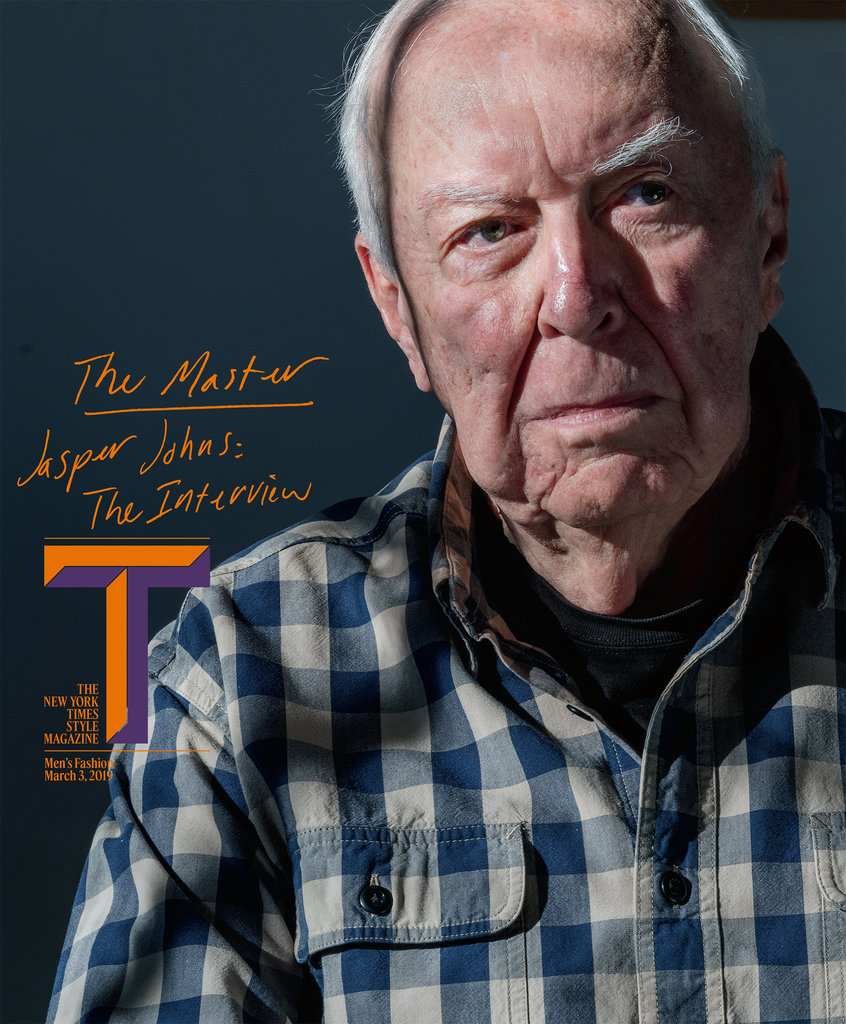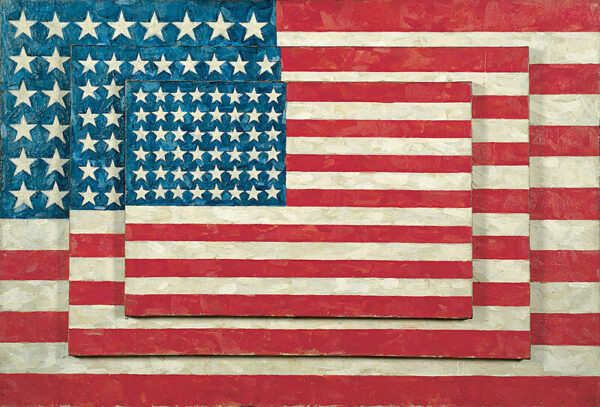
04 Oct TIO NYC 2021: Jasper Johns “Mind/Mirror” at the Whitney!
Critics are tripping over superlatives when describing the seminal blockbuster titled “Jasper Johns: Mind/Mirror” organized by Scott Rothkopf, chief curator at the Whitney Museum, and Carlos Basualdo, curator of contemporary art at the Philadelphia Museum of Art. (Me too!)
“This unique dual structure draws on the artist’s lifelong fascination with mirroring and doubles, so that each half of the exhibition echoes and reflects the other. Organized in largely chronological order, the retrospective presents pairs of related galleries—one in each city—that offer varied perspectives on the artist’s turns of mind. Individually, each gallery focuses on a particular aspect of Johns’s thought and work through the lens of different themes, processes, images, mediums, and even emotional states. Taken together, they provide an immersive exploration of the many phases, treasures, and mysteries of a radical, enduring, and still-evolving career,” explained the Whitney.

Jasper Johns, protean artist still shape-shifting at 91. Image courtesy The New York Times.
We saw the New York installation only, which The Washington Post summed up as follows:
“..it’s a brilliantly conceived show about the limits of vision, the limits of knowing, the fallibility and finitude of the body…”
Jasper Johns is, according to the elevator operator, one of the three wealthiest artists alive in the world today. Maybe yes, maybe just lift talk to fill the ride from the 5th to the 1st floor of the museum, following our visit to “Mind/Mirror,” the first stop on our return trip (after two+ long years) to New York.
So who is Jasper Johns? For many the name rhymes with “Flag,” the artist’s most famous painting and foremost among his images that decades ago entered the permanent collection of the Museum of Modern Art.
“Flag” remixes renowned Surrealist painter Rene Magritte’s conundrum “Ceci n’est pas une pipe” (“This is not a pipe”). In short, whaat the viewer sees in the representation both is and is not a pipe. “Flag,” a more or less accurate representation of Old Glory rendered in encaustic on collaged paper and fabric, a favorite medium for Johns, begs the questions is “Flag” in fact, a flag or simply a representation? Is every American flag simply a representation of some predetermined notion of the American flag, a symbol of an idea? Both?

Johns was born in 1930 in Augusta, Georgia, where spent his childhood and adolescence moving around South Carolina. After three semesters at the University of South Carolina, he transferred to the Parsons School of Design in New York City, where he spent most of his adult life. These days he is living in Sharon, Connecticut, where, at 91, he remains a studio rat.
In 1953, Johns met and began his romantic and professional relationship with Robert Rauschenberg, which helped to ground him in the vibrant Post-WWII New York art scene and put his work in front of the renowned dealer Leo Castelli. Castelli in turn gave Johns his first one-man show in 1958. When MoMA director Alfred Barr, Jr. showed up and bought three paintings, (unprecedented for a virtually unknown artist), Johns was officially “discovered.”
The rest is history. Or mystery, as Johns is renowned for not wanting to explain his work. (Art history is full of mark-makers like Johns, who show their hand but do not explain. Velasquez is another example).
Johns leaves the in-depth, insightful narratives to curators like Rothkopf, whose “Mind/Mirror” is the most comprehensive, retrospective ever devoted to Johns’s career, which spans more than 65 years – and counting.

The following is an excerpt from The New York Times in-depth review:
“…The American artist’s last East Coast survey, at the Museum of Modern Art in 1996, had 225 works; the new one has twice that number. The earlier show filled two floors of MoMA; this one spreads over two museums, the Whitney Museum of American Art and the Philadelphia Museum of Art. It looks differently splendid at each.
“Should you make an effort to see both halves? Absolutely. They’ve been designed as separate but complementary experiences, and each, though different in content and emphasis, tells a full Johns story. Yet it’s the story they tell together that’s the truer one, the one that lets a notoriously complicated body of art look and feel as richly original as it really is.
“And that richer view seems necessary given that, despite Johns’s uncontested historical status, a critical consensus on him remains unsteady. It certainly was in 1996. One frequently voiced take on his career at the time was that he had a hot, fast, early run with his flags, maps and targets, then got tangled up in unproductive experimentation, and finally settled into decades of hermetically personal and repetitive work. He went from inspired Pop progenitor, proto-Conceptualist and Neo-Dada game-changer to teasing puzzle master…
Continue reading here and GO!


Sorry, the comment form is closed at this time.